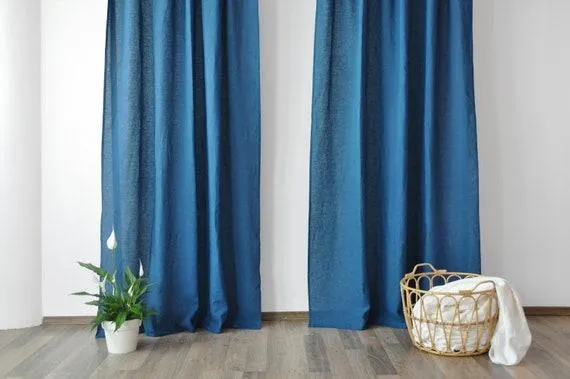Everything You Need to Know About Velvet Feeling Plants
If you’ve ever felt the unique soft, fuzzy texture of certain plants, then you already know what velvet feeling plants are all about. But for those curious about these special indoor plants, here’s a complete guide to some common velvety varieties.
What Exactly Makes Them Feel Velvety?
Plants in the Pilea, Peperomia, and Coleus genera have hairy structures on their leaves and stems that give them a plush feel unlike any other. Under a microscope, you’d see these hairs are actually tiny filaments sticking straight up. It’s rather like those fuzzy animals some kids collect. From an evolutionary perspective, scientists theorize these hairs help regulate moisture and temperature for the plant.
Some Popular Velvet Plant Varieties
- Chinese Money Plant (Pilea peperomioides) – Perhaps the fuzziest of all, with round coin-shaped leaves in shades of green. Low maintenance andPropagates easily from cuttings.
- Polka Dot Plant (Hypoestes phyllostachya) – Frilly leaves spotted with pink or white give it a fun speckled look. Fairly drought tolerant once established.
- Coleus (Plectranthus scutellarioides) – Comes in a rainbow of colors from deep burgundy to lime green. Leaves are oval or smooth-edged. Thrives with moderate water.
While rarer, varieties like Peperomia tetraphylla and Peperomia ferreyrae have exceptionally soft leaves too. With so many options, you’re sure to find a velvety plant to suit your space.
Care Tips for Velvet Plants
In general, velvet feeling plants are easy indoor companions. But taking care to meet their basic needs will keep their fuzzy leaves thriving.
- Light: Most varieties prefer bright, indirect light. Direct sun can scorch their leaves.
- Water: Water when the top inch of soil feels dry. Do not overwater, which causes rot.
- Humidity: Mist leaves occasionally or group with other plants to boost humidity levels they naturally enjoy.
- Fertilizer: Feed monthly in spring/summer with a dilute liquid houseplant fertilizer.
- Pruning: Trim off dead or leggy growth as needed to shape the plant and encourage bushy new growth.
Proper growing conditions will keep the velvet intact for you to enjoy touching. But an occasional grooming with a dry cloth restores that plush texture too.

Benefits of Velvet Plants
Beyond their novel tactile sensation, velvet plants offer beauty and benefits to indoor spaces.
- They add lush foliage and vibrant colors to décor with low maintenance.
- Some varieties naturally filter toxins like formaldehyde from the air.
- Their fuzzy leaves help humidify dry indoor air in winter.
- Simple to propagate via stem or leaf cuttings for more fast-growing varieties.
- Enjoy touching their plush leaves for sensory satisfaction and stress relief.
Whether placed on a table, hanging basket, or filling a corner, velvet plants enrich indoor living with their unique textures and visual prominence.
Some Growing Challenges You May Face
While generally uncomplicated houseplants, velvet feeling varieties could have occasional pest or disease problems, as with any plant:
- Mealybugs: Look for fuzzy white spots and wipe them away with cotton soaked in rubbing alcohol.
- Spider mites: Tiny pests cause leaf stippling. Isolate and spray with neem oil or insecticidal soap.
- Root rot: Too much moisture causes mushy stems and yellow leaves. Improve drainage if soil stays soggy.
- Leaf spots: Possibly from too much direct sun or water on foliage. Prune off damage and adjust care.
With a little TLC to address such issues early, velvet plants remain thriving houseplant buddies for many years.
Other Fun Uses for Velvet Plants
Whether you grow them as pets or incorporate them into décor, velvet feeling plants have creative applications beyond typical houseplants.

- Craft floral arrangements incorporating their unique texture and shapes.
- Press flat leaves for arts and crafts like coasters, collages or greeting cards.
- Dry bundles of leaves for winter sachets or potpourri. They retain their novelty softness.
- Display in macrame hangers, woven baskets or terrariums for an artful touch.
- Use clippings in DIY massage stones or bath bombs for indulgent sensory pleasure.
So whether your interest involves horticulture, science, design, relaxation or novelty—velvet plants deliver on many levels.
In Summary
With their plush foliage, ease of growth, and care adaptations, velvet feeling plants suit a wide range of indoor gardening needs and preferences. Their softness offers soothing tactile satisfaction unlike smooth-leaved greens. Whether as accent pieces or as novel pets to nurture, velvety varieties add unique sensory and visual contrast to living spaces through seasons. With a little understanding of their basic environment and maintenance requirements, these special plants remain thriving indoor fixtures for many years to come.
I hope this guide has covered everything you wanted to know about velvet plants and encourages you to explore the engaging world of tactile houseplants further. Feel free to touch base if any other questions arise in your search for the perfect fuzzy variety for your home or collection. Happy planting!
Key Details About Velvet Feeling Plants
| Common Name | Light Needs | Water Needs | Soil Type | Propagation |
|---|---|---|---|---|
| Velvet Plant | Bright, indirect light | Allow soil to dry out between waterings | Well-draining potting mix | Stem cuttings |
| Blue Velvet Plant | Bright, indirect light | Water when top inch of soil is dry | Well-draining potting mix | Stem cuttings |
| Velvet Leaf | Bright, indirect light | Water when top inch of soil is dry | Well-draining potting mix | Seeds, stem cuttings |
| Rabbit’s Foot Fern | Bright, indirect light | Keep soil moist | Rich, organic potting mix | Spores, division |
| Flame Vanda | Bright, indirect light | Keep media moist | Orchid mix | Seeds, division |
FAQ
-
What is a velvet feeling plant?
A velvet feeling plant is a kind of houseplant that basically has incredibly soft leaves, kind of like velvet fabric. The scientific name is Gynura aurantiaca, but many folks call it a “purple passion plant” basically because of its unusual texture.
-
Why are the leaves so soft?
The leaves have these tiny hairs on their surface that give them an amazingly soft feel. The hairs protect the plant and help it retain water, I guess. But they sure make the leaves smooth and cuddly! You almost wanna use the leaves as like tiny pillows, if it didn’t damage the plant, heh.

-
How do you take care of it?
Velvet feeling plants are pretty easygoing as houseplants go. Make sure it gets bright, indirect sunlight and keep the soil lightly moist. Don’t overwater it though, or the leaves may get mushy and gross. You can trim it to shape but try not to obstruct new growth. Basic plant care is all it needs to keep those fab velvety leaves looking gorgeous for years, hopefully.
-
Do the leaves feel the same all over?
Interestingly, different parts of the leaf feel slightly unlike. The tops are quite soft but running your fingers toward the stem, it gradually loses its plushness. Similarly, new growth feels more downy than older leaves. Who knew a plant could have such varied textures? It’s almost intoxicating to touch! But is feeling plants all day a good use of time? Haha.
-
Is the plant safe around kids and pets?
While the velvet feeling plant itself appears to cause no harm, you gotta be careful about tiny curious fingers or paws investigating those alluring leaves. Maybe keep it out of reach just to be safe, since some folks report their dogs trying to “eat” the leaves, oops! Overall it seems non-toxic, but better play it cautious with little ones or furballs around. Your velvet feeling plant doesn’t wanna cause any unnecessary worries, right?
-
Will it lose its softness over time?
From what I’ve read, as the velvet feeling plant matures, the softness may fade just a tad. The leaves on older specimens tend to be a little less voluptuous than brand new growth. However, with proper care I don’t think it will ever totally lose that silky quality. Regular pruning reinvigorates new soft leaves too. Unless something goes wrong with its care, it should stay snuggly for many years to come, fingers crossed!
-
Can it be propagated from cuttings?
Yes! It’s actually pretty simple to multiply your plant and spread the velvetiness. Just take 4-6 inch stem cuttings in spring or summer, strip the lower leaves, and plant them in potting mix. Keep the soil moist and within a few weeks you should see roots starting to develop. Once established, your cuttings can be planted into permanent pots to nurture additional plushly-leaved clones. Before ya know it, you’ll have an entire farm of soft greenery, haha!

